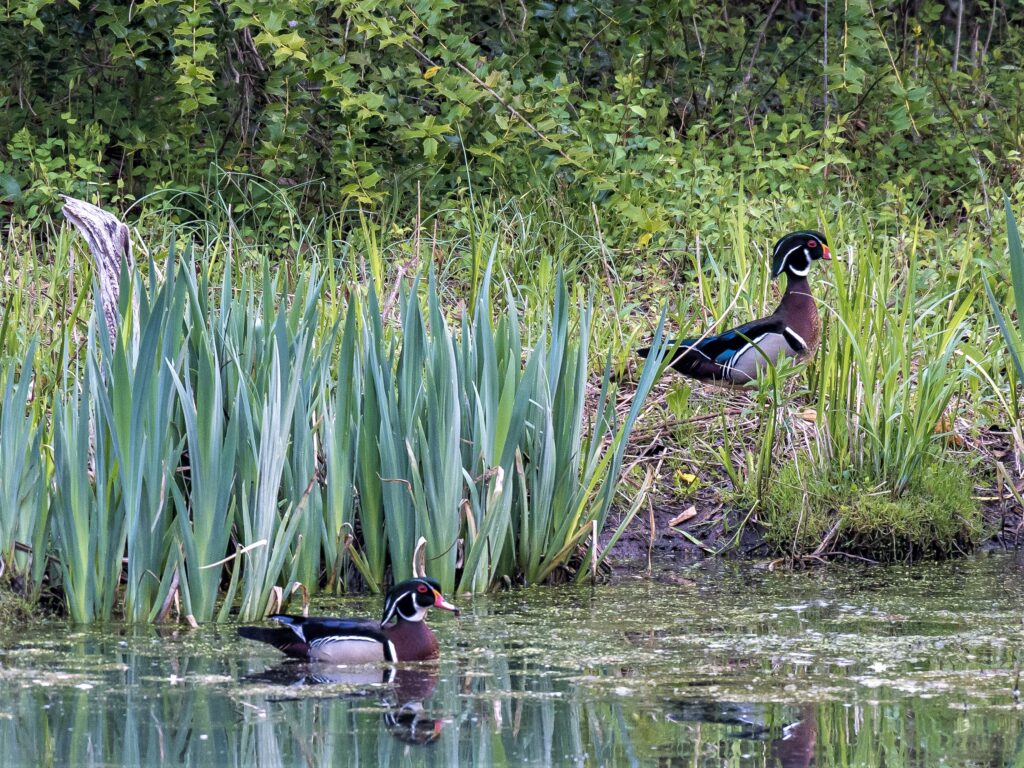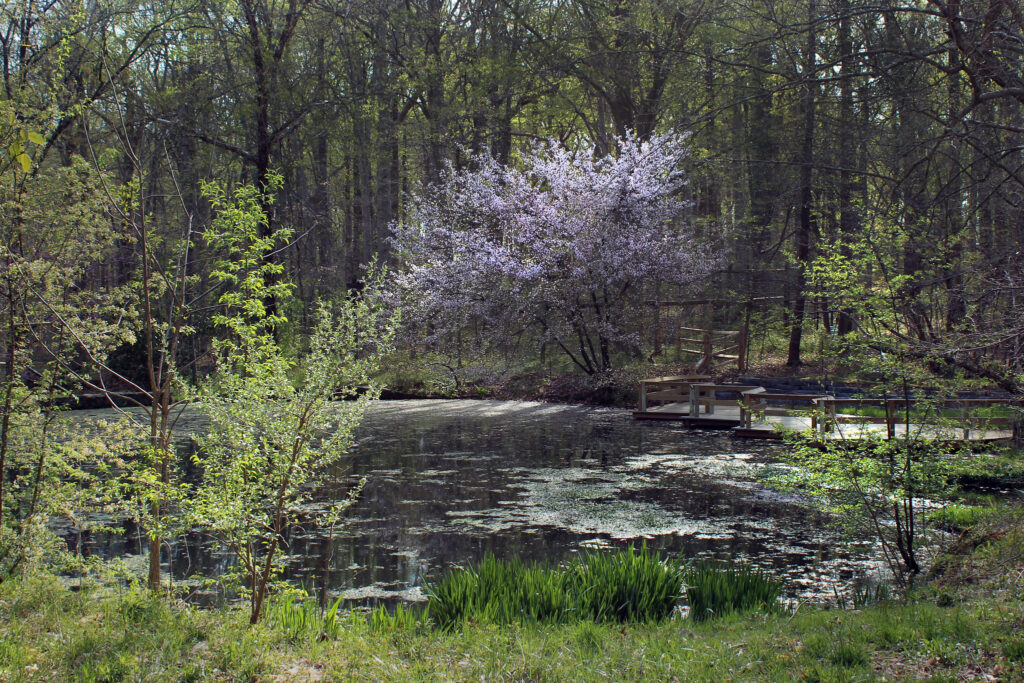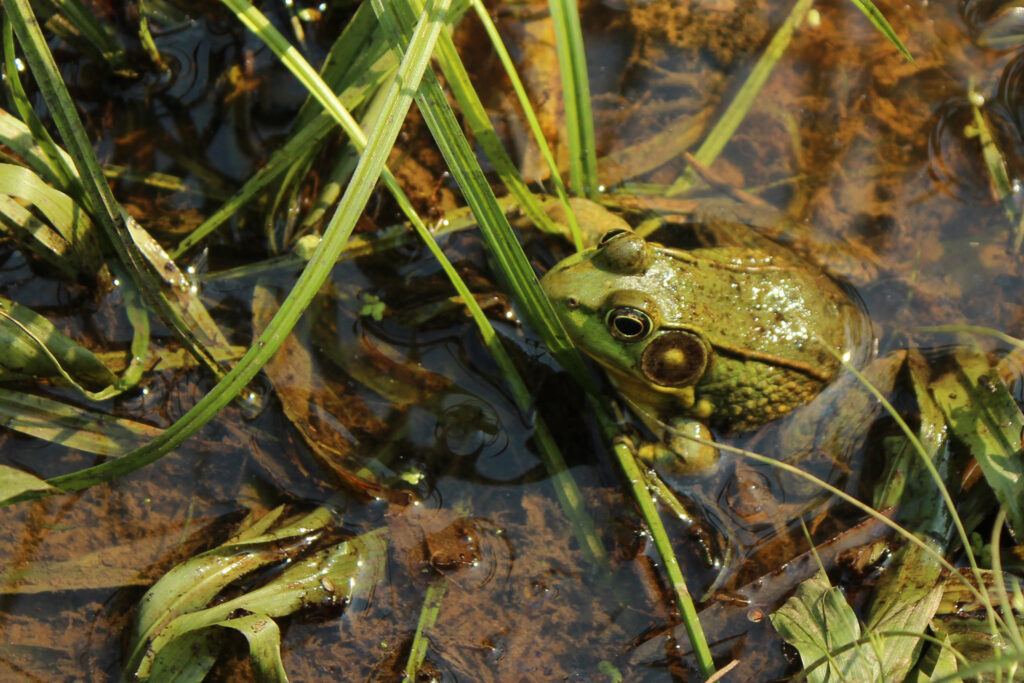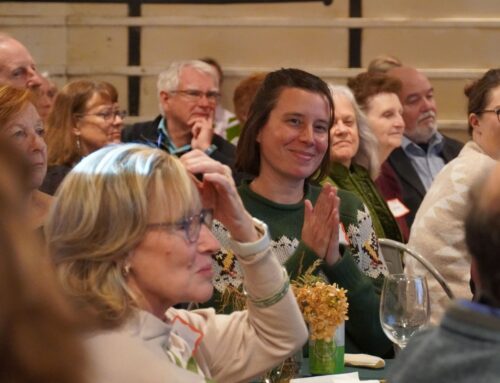Celebrate with us,
YOU answered Tyler’s call to action!
After many years of accumulating silt, the Tyler Pond is at capacity. The Pond at Tyler began as a shallow seep that Dr. Wister, our first Executive Director, dug out between 1955 and 1956 to create the Pond we see today. Over the next 70 years, this beautiful part of our landscape became a hub for wildlife activity. Frogs and turtles likely always used the shallow seep, but open water enticed even more creatures who needed this habitat to thrive.
Without restoration now, we could lose the Pond and all the aquatic life it supports – and our community would lose the chance to connect with this special habitat.
Tyler’s Board of Trustees and staff identified restoring the Pond as urgent as we worked on our new Strategic Plan this year. However, we did not have the $96,000 to fund the project in our operating budget. But, with a gift from one donor who loved this special spot and the wildlife who called it home, we had a beginning. We began to reach out to others who might have an interest. In total, seven anonymous donors gave to make this project possible. As each donor gave, we built momentum until the final gift of $15,000 completed our funding. We thank each one of them for their vision and generous support.
Dredging is underway at the Tyler Pond. We expect the project will take about four to six weeks. We will remove approximately 1,850 cubic yards of sediment during the dredge and bring it across the street to our compost piles. There it can dry for use in other projects requiring compost or soil. We plan to start this project as soon as possible, weather permitting.
By completing this work in the winter, our goal is to minimize disruption to Tyler’s visitors and the wildlife that lives in the pond. Any fish we encounter will be relocated, and we will return any turtles we disturb to the Pond to overwinter after the project is complete. Our friends, the frogs, have already dug deep below the frost line or tucked themselves away in the leaf litter or hollow logs to wait for spring. Our resident aquatic wildlife should be back enjoying the Tyler Pond come spring.
The sediment in the Pond hints at a larger problem facing our community. The small tributary that feeds our pond starts on our property up by Painter Road. It is technically unnamed, but those who love it at Tyler call it Rocky Run. Its watershed reaches beyond the Arboretum, and about nine acres – 13% of the whole watershed – is under impervious surface or paved over areas like roads, driveways, parking lots, and houses. In an undeveloped landscape, most of the rain that falls is absorbed into the ground, where the soil and the roots of plants will filter out excess sediment and pollutants. However, rain or snow that falls on impervious surfaces runs off into Rocky Run, picking up speed, sediment, and other pollutants along the way.
Runoff is presenting challenges, both here at Tyler and beyond. Rocky Run is considered ‘degraded,’ exhibiting poor channel stability, sharp cutouts in the banks, and exposed soil. Climate change is likely to make this issue worse. Historically, storm events in our area generate about an inch of rain an hour. As our weather becomes increasingly unstable, we expect that rain amount to jump to nearly 2 inches per hour – double what we saw before. For a deeper dive into stormwater issues in the greater Philadelphia area, check out our article “Restoring the Natural Rain Cycle.”
We’re already seeing the impacts of increasingly severe weather and an aging stormwater system here at Tyler and in the larger community.
For one thing, more properties in local neighborhoods may carry a hidden flood risk. Even in areas not historically prone to flooding, higher rainfall totals, greater amounts of impervious surface, and deteriorating stormwater systems can all tally up to mean expensive repairs for homeowners. And that’s just the human risk. According to the Environmental Protection Agency, “polluted runoff is one of the greatest threats to clean water in the U.S.” We all rely on clean water, from the communities that get their drinking water from the Delaware River to the wildlife that call these aquatic environments home.
Dredging the Tyler Pond is only the exciting first step for the Arboretum. In the next few years, Tyler will work to undertake some larger-scale projects to address stormwater holistically on our property. These projects are an opportunity for us to solve runoff problems upstream wherever possible, restore damaged meadow and stream habitat, and create climate-wise solutions that will make a difference for the community around Tyler.
Be sure to put the Tyler Pond on your spring must-see (and hear) list. The chorus of frogs and basking turtles is a seasonal display you don’t want to miss and an important reminder of our responsibility to preserve these aquatic habitats.
Stay tuned as we move forward into 2023. Addressing our current stormwater issues and preparing for a future impacted by climate change will take time. At Tyler, we take our responsibilities to our local wildlife and community seriously. We will keep you updated as we move forward on our exciting projects to help us address local stormwater issues and steward this beautiful landscape into the years to come.









